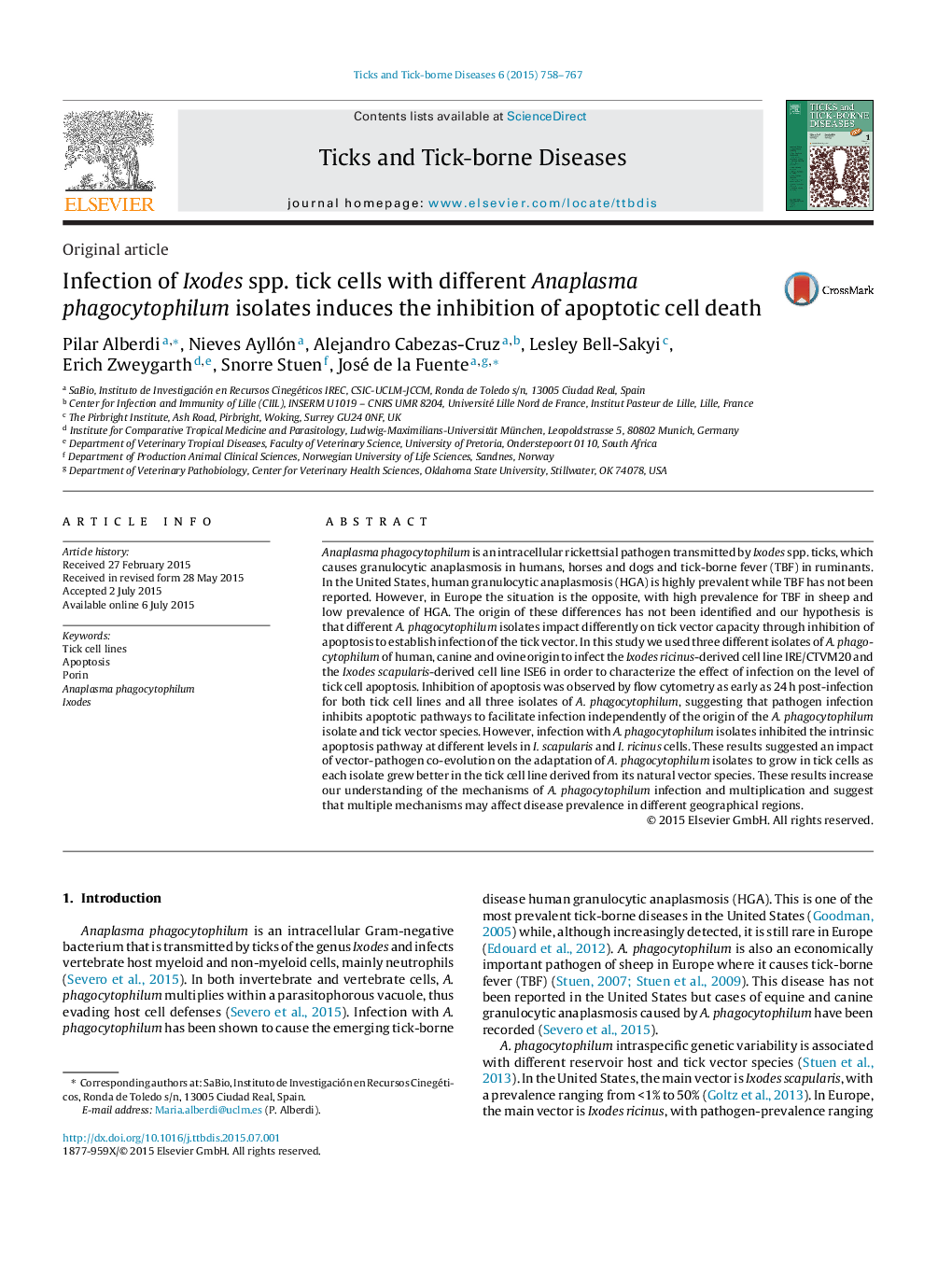| Article ID | Journal | Published Year | Pages | File Type |
|---|---|---|---|---|
| 5807194 | Ticks and Tick-borne Diseases | 2015 | 10 Pages |
Anaplasma phagocytophilum is an intracellular rickettsial pathogen transmitted by Ixodes spp. ticks, which causes granulocytic anaplasmosis in humans, horses and dogs and tick-borne fever (TBF) in ruminants. In the United States, human granulocytic anaplasmosis (HGA) is highly prevalent while TBF has not been reported. However, in Europe the situation is the opposite, with high prevalence for TBF in sheep and low prevalence of HGA. The origin of these differences has not been identified and our hypothesis is that different A. phagocytophilum isolates impact differently on tick vector capacity through inhibition of apoptosis to establish infection of the tick vector. In this study we used three different isolates of A. phagocytophilum of human, canine and ovine origin to infect the Ixodes ricinus-derived cell line IRE/CTVM20 and the Ixodes scapularis-derived cell line ISE6 in order to characterize the effect of infection on the level of tick cell apoptosis. Inhibition of apoptosis was observed by flow cytometry as early as 24Â h post-infection for both tick cell lines and all three isolates of A. phagocytophilum, suggesting that pathogen infection inhibits apoptotic pathways to facilitate infection independently of the origin of the A. phagocytophilum isolate and tick vector species. However, infection with A. phagocytophilum isolates inhibited the intrinsic apoptosis pathway at different levels in I. scapularis and I. ricinus cells. These results suggested an impact of vector-pathogen co-evolution on the adaptation of A. phagocytophilum isolates to grow in tick cells as each isolate grew better in the tick cell line derived from its natural vector species. These results increase our understanding of the mechanisms of A. phagocytophilum infection and multiplication and suggest that multiple mechanisms may affect disease prevalence in different geographical regions.
